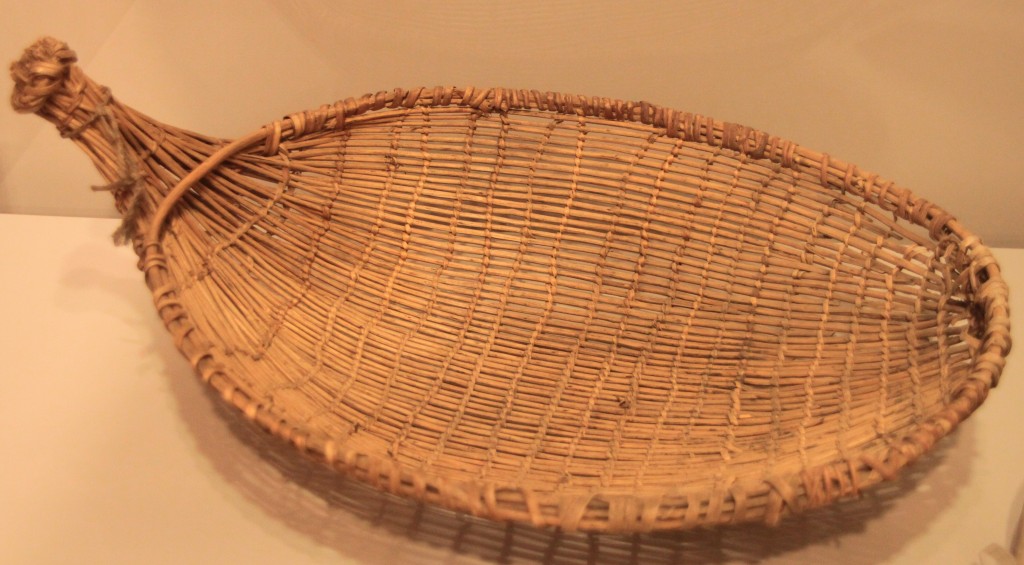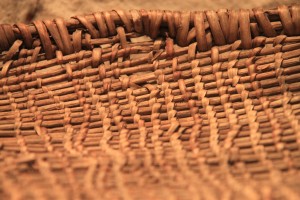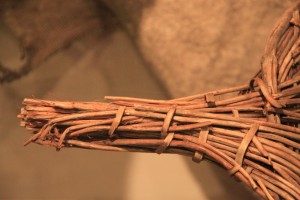Shoshoni women used seed beater basketry as a utilitarian basket. This seed beater was used in the harvesting of different seeds; which was the practice and responsibility of the women in this culture. “The woman would beat the grass panicles over the rim of the basket causing the seeds to fall inside” (1) This basket is made with split osiers, rhus stems. There were also young shoots of other plants involved in the making of seed baskets, some of which weren’t classified.
The seed basket resembled the form and structure of a tennis racket. The Shoshoni used a twined weave with a self-coiled rim finish to assemble this durable makeup.(2) Although the basket appears to have a degree of complexity; the twine method was believed to be the simplest manner of weaving. The twined weave process was described as “ Strands of the woof series being arranged in two’s and in weaving are twisted half around at each intersection, inclosing the opposing fillets. The resulting open work has much the appearance of ordinary netting.” (3)
1. James, Carolyn. Nez Perce Women In Transition. Moscow, ID: U of I Press, 1996. 157.
2. Turnbaugh, Sarah P., and William A. Turnbaugh. Indian Baskets. Atglen, PA: Schifter Publishing, 2004.
3 .James, Carolyn. Nez Perce Women In Transition. Moscow, ID: U of I Press, 1996. 123.
Photos Provided by Idaho State Historical Society:
– Seed Beater (344.72/1914.3.72): Berry drier, found circa 1880 by donor.
– Bannock seed gathering basket (804.34).


